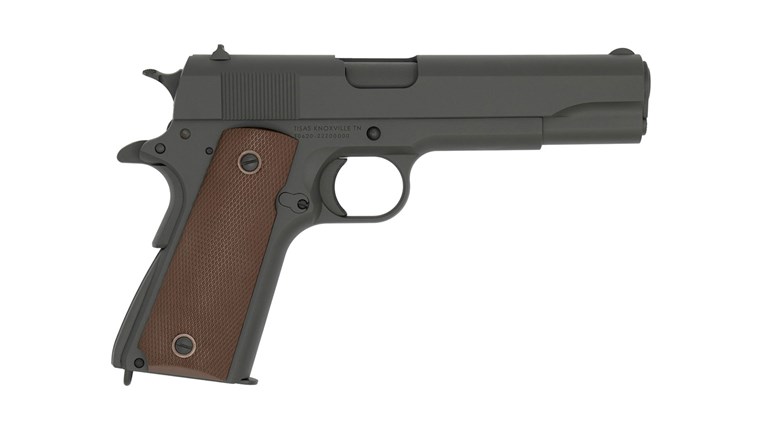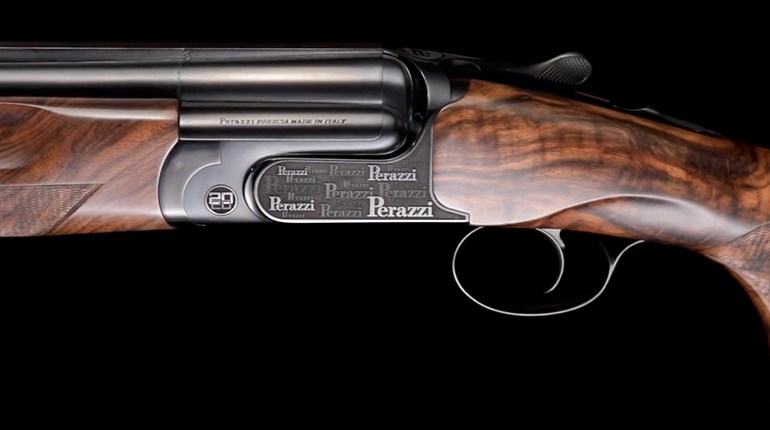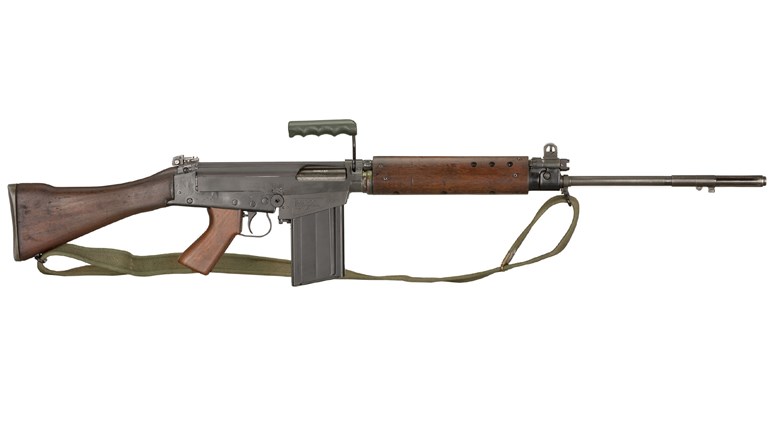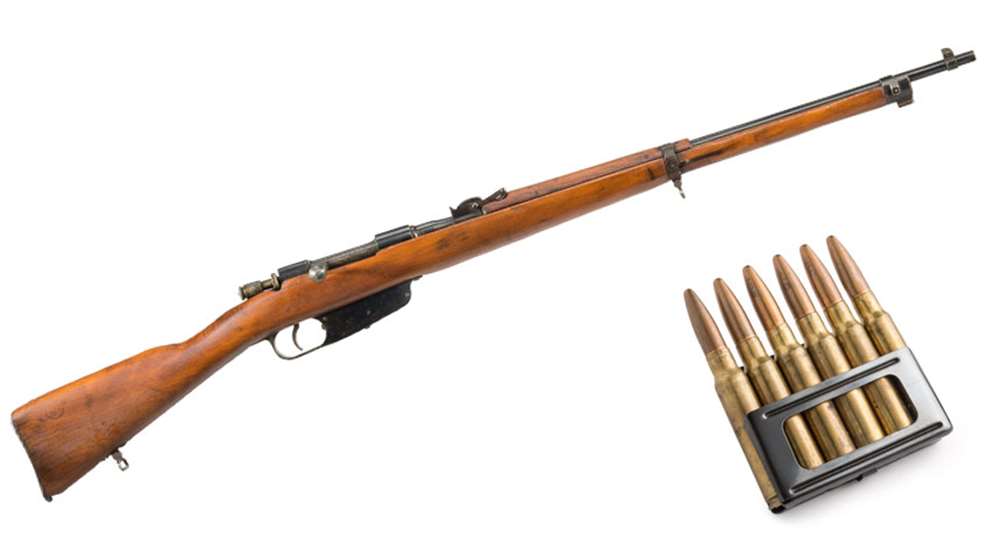
Six rounds of 6.5x52 mm fit into the en bloc clip of the Italian M41 Carcano rifle, which dropped free when the last round was fired.
As the 11th Kompanie of SS-Polizei-Regiment Bozen moved in formation down the Via Due Macelli in Rome’s Municipio I in the afternoon of March 23, 1944, the men were singing a German marching song. They did this purposely in an effort to present a conspicuous and intimidating police presence in the city. Just six months prior, King Victor Emmanuel III had ousted Benito Mussolini, replaced him with Marshal Pietro Badoglio, and signed an armistice with the Allies. In the south, Badoglio’s Italian Co-Belligerent Army fought alongside U.S. forces, but in the north, the Third Reich took over what had once been territory belonging to its former Axis partner. This included annexation of a German-speaking province of Northern Italy called South Tyrol, which is where the men of SS-Polizei-Regiment Bozen came from. They were veterans of the Italian Army who now wore German uniforms as they patrolled the streets of Rome to suppress a resistance movement known to be operating there.
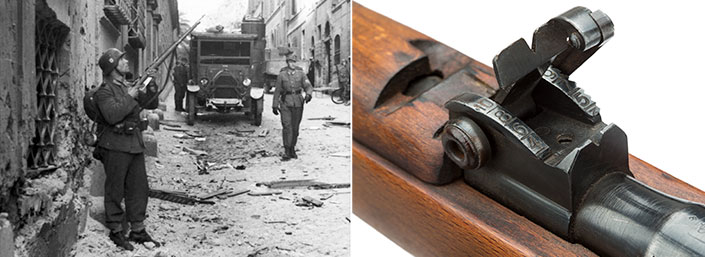
After passing through the Largo Del Tritone, the men of the 11th Kompanie continued along the Via Del Traforo, then turned left and started up the Via Rasella, a narrow, 850-foot-long cobblestone street leading uphill to the Palazzo Baberini. They did not know they were walking into an ambush. Half way up the hill, the column began passing a rubbish cart—it did not arouse suspicion because civilians were nearby going about their daily business. But an improvised explosive device concealed in the cart detonated violently, killing 28 of the SS policemen instantly. Five more would eventually succumb to their wounds. As the smoke cleared from the blast, 16 members of the “GAP” (Gruppi di Azione Patriottica or Patriotic Action Group), launched a brief attack, then faded into the crowd. A brutal overreaction followed in the aftermath: members of the Polizia dell’Africa Italiana (the PAI) and the Guardia di Finanza (the GdF) began to patrol the neighborhood around the Via Rasella rounding up civilians. The survivors of SS-Polizei-Regiment Bozen then began shooting indiscriminately at windows on the upper floors of the buildings lining the street. Although they wore German uniforms and helmets, these men were not armed with German rifles: they were armed with the Fucile Modello 1941, also known as the Italian M41 Carcano rifle.
In 1891, the Italians adopted one of the most advanced rifles in the world in the form of Salvatore Carcano’s Fucile Modello 1891. It was developed to provide a smokeless-powder repeater to replace Italy’s obsolete large-bore, blackpowder, single-shot rifles. The system was built around the new 6.5x52 mm rimless bottleneck cartridge that was first powered by Alfred Nobel’s Ballistite propellant and later the lower-flame-temperature propellant, solenite. The use of a new and innovative gain-twist-rifling pattern preserved barrel life by gradually accelerating the 162-grain, round-nosed bullet’s annular momentum over the length of the rifle’s 30.7-inch barrel. Another innovative feature that put the Fucile Modello 1891 at the cutting edge of small-arms design in the late 19th century was its Mannlicher-style internal magazine. Feeding from a six-shot en bloc clip, the design loaded from the top of the action, with ejection of the empty clip through the bottom once empty.
The Model 1891 Carcano rifle was such a successful design that it served the Kingdom of Italy through the Boxer Rebellion, the Italo-Turkish War and World War I. The basic design was so robust that it was adapted to various carbine models that likewise enjoyed success. By the late 1930s, though, the Italian military wanted a short rifle version of the Carcano equipped with fixed rear sights and capable of firing a bigger, heavier bullet. To that end, the Fucile Modello 91/38 was developed with a 21.06-inch barrel that was at first chambered in 6.5x52 mm, but then also the new 7.35x51 mm cartridge. In the end though, the Italians began to regret this choice. The logistical challenges associated with converting over to the new caliber were just too great, and the concept of a non-adjustable sight on what was effectively a carbine proved impractical. For this reason, the old 50.6-inch-long 1891 Carcano rifle in 6.5x52 mm was briefly brought back into production, but this strained manufacturing resources at a critical time. That is when yet another variation on the Carcano carbine was born.
This one was basically just an 1891 Carcano rifle in 6.5x52 mm that was 4 inches shorter and used a carbine-style, adjustable rear sight. It was adopted as the Fucile Modello 1941, or the M41 Carcano rifle, and it was just what the doctor ordered, but it entered service during the final two years of Italy’s tragic experience with fascism. After the armistice of September 1943, the Model 1941 Carcano briefly served the ambitions of Nazi Germany in the hands of SS-Polizei-Regiment Bozen. On March 23, 1944 when the Roman resistance set off a bomb that killed 33 men from that regiment’s 11th Kompanie, the 1941 Carcano rifle was there. It can be seen arming SS policemen in a series of now infamous photographs taken just minutes after the blast. Those same SS policemen used the 1941 Carcano rifle to menace Roman civilians at bayonet point, and shoot-up the windows of almost every apartment along the Via Rasella. To this day, bullet damage can be seen there—a vivid reminder of a dark chapter in the history of one of the finest military rifles of all time.













